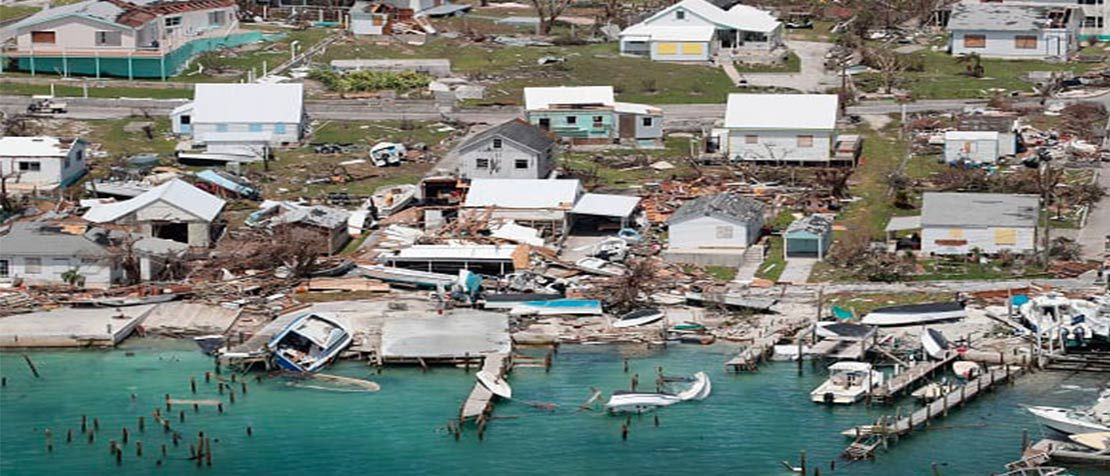
Hurricane Dorian ITU sends emergency telecoms assistance to the Bahamas
Hurricane Dorian has steamrolled through the northern Caribbean and into the United States, leaving a trail of destruction in its wake.
In the Bahamas, the death toll continues to rise with authorities warning that the final number could be “staggering.” The United Nations has said that more than 70,000 people were “in immediate need of life-saving assistance” including food, water, shelter and medicine.
The full scale of the devastation was slow to emerge as massive areas of the northern Bahamas, including the Abaco Islands, have been hard to access by rescue crews.
ITU staff are now helping to deploy critical equipment to areas hit hardest by Hurricane Dorian in close collaboration with the Emergency Telecommunications Cluster.
ITU is deploying Iridium and Inmarsat satellite phones (satphones) to provide voice communications. In addition, ITU is deploying Inmarsat Broadband Global Area Networks (BGANs), which provide satellite internet connectivity and voice communications. ITU has deployed some 50 units in total.
The vital role of telecoms in emergencies
When established terrestrial communications systems have been affected by disasters, satellite phones and BGANS can operate and are a key part of emergency telecommunications.
They play a crucial role in the immediate aftermath of disasters by ensuring the timely flow of vital information, allowing for the effective coordination of humanitarian response efforts.
“In the wake of a disaster, the destruction of telecommunications networks greatly hampers the work of emergency response crews and humanitarian agencies. It also causes great distress to local people unable to verify the safety of their loved ones,” says Doreen Bogdan-Martin, Director of ITU’s Telecommunication Development Bureau. “ITU’s Emergency Telecommunications team is committed to working around the clock to get the lines of communication open again as quickly as possible, with the invaluable support of our satellite industry partners, Inmarsat and Iridium.”
RELATED – Emergency telecoms: Key lessons from the Caribbean
“Hurricane Dorian has caused massive destruction. In the Abaco and Grand Bahama Islands, most of the mobile telecommunications infrastructure, networks and services, including power lines, have been destroyed,” said Maritza Delgado, Programme Officer of the Environment and Emergency Telecommunications Division at ITU. “ITU’s deployed equipment will provide vital voice and data communication and help re-establish critical telecommunication links for government agencies and humanitarian organizations to coordinate response efforts on the ground.”
A global network to help
ITU supports the humanitarian community before disasters strike by incorporating ICTs into disaster risk reduction measures; during disasters by supporting timely deployment of emergency telecommunications to affected areas; and in the immediate aftermath of disasters by supporting telecommunication network rehabilitation as part of the recovery effort.
ITU is also part of the Emergency Telecommunications Cluster (ETC), a global network of organizations that work together to provide shared communications services in humanitarian emergencies.
Moving disaster preparedness forward
At ITU’s Global Emergency Telecommunications Forum (GET-19) in Mauritius earlier this year, ITU, together with some key partners from the ETC, presented a disaster connectivity map initiative. This initiative will work with many stakeholders, including mobile network operators, social media and Internet companies, to provide or enhance near real-time connectivity information when disasters strike.
“Together with its partners, and especially with the ETC, ITU is committed to moving this disaster connectivity initiative forward,” said Ms. Bogdan-Martin.
At GET-19, ITU also presented global guidelines on National Emergency Telecommunications Plans to assist national authorities and policy-makers in developing plans for the effective and efficient use of technologies for all phases of disaster management.
RELATED: Key recommendations for using disruptive technologies to manage disasters
PHOTO: Scott Olson/Getty Images
